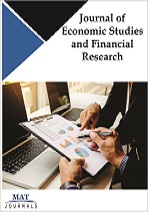Savings, Reserve, ODA, Remittances and FDI: Cross Countries Analysis
Keywords:
Exchange rate, Foreign Direct Investment (FDI), Official Development Assistance (ODA), Reserve, Remittance, SavingsAbstract
There is growing consensus in the field of economic development on the importance of overseas remittances for poverty alleviation and domestic development. Since foreign remittances may alleviate poverty by increasing the earnings of recipient households, they have a substantial influence on consumers. This money is used for health, education, and business, which improves human capital, raises living standards, and provides stability in hard economic times. The study focuses on analyzing how various economic indicators influence foreign direct investment. Economic indicators include gross savings, adjusted net savings, total reserves, official development assistance, Official Development Assistance (ODA) received per capita, net Official Development Assistance (ODA) expressed as a proportion of Gross National Income (GNI)., personal remittances, exchange rate, PPP conversion factor to Gross Domestic Product, and Price Level Ratio (PLR) of PPP conversion factor to market exchange rate. A dataset consisting of panel data from 178 nations was collected for the period spanning from 1991 to 2022. This paper utilized various econometric models like POLS, OLS, 2SLS, Driscoll-Kraay (DK), and GMM. The analysis demonstrates a substantial beneficial relationship between foreign direct investment and total reserves and personal remittances across all models. This analysis demonstrates a substantial positive association between foreign direct investment and adjusted net savings, as well as the PPP conversion factor to gross domestic product, in all models except the GMM model. This study reveals a substantial negative correlation between foreign direct investment and the Price Level Ratio (PLR) of the PPP conversion factor to the market exchange rate in all models except for the GMM and Driscoll-Kraay (DK) models. Ultimately, In the GMM model, foreign direct investment and the exchange rate exhibit a negative correlation. The research emphasizes essential techniques for attracting foreign direct investment, such as bolstering overall reserves, encouraging remittance inflows, and improving adjusted net savings. Stabilizing exchange rates and rectifying pricing disparities in PPP conversion factors are essential for fostering a conducive investment climate. These findings provide pragmatic guidance for legislators to encourage sustainable financial progress via Foreign Direct Investment (FDI).




